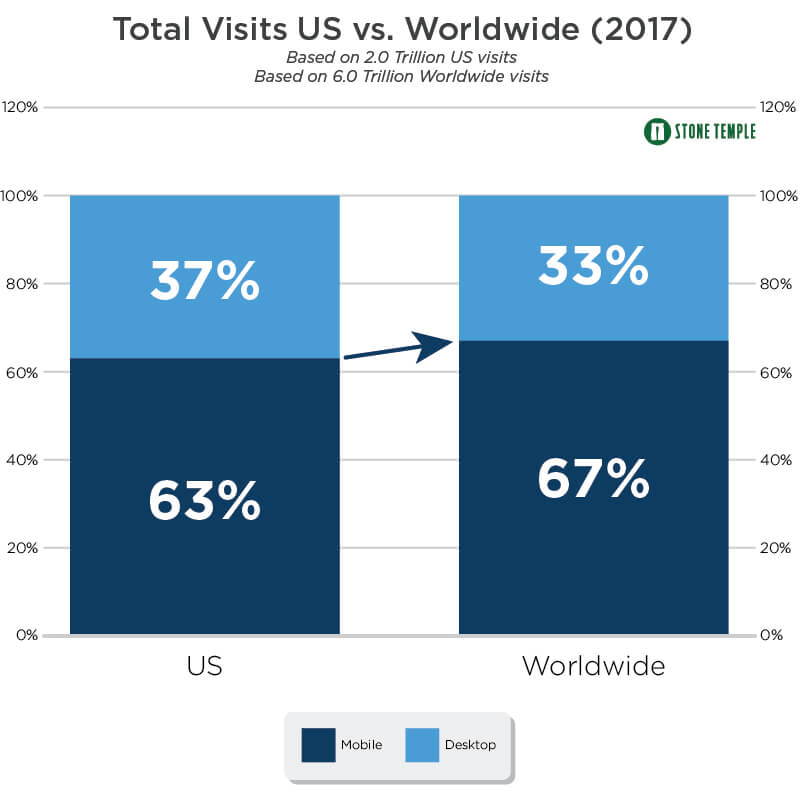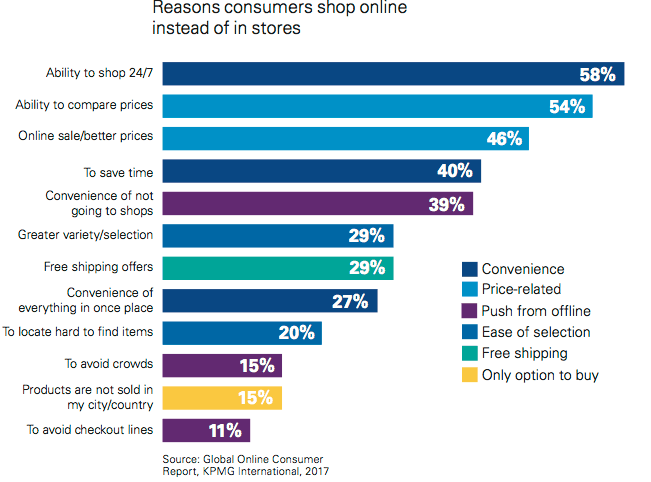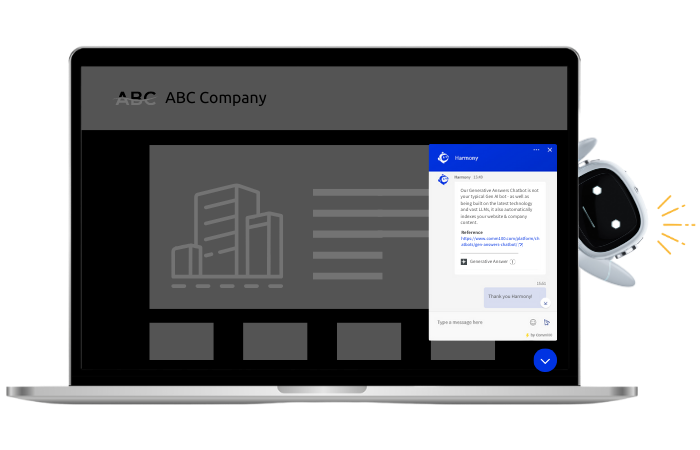Introduction
It’s 2018, and eCommerce is truly having its moment. Convenience, necessity, leisure, and the pursuit of better deals are just a handful of the factors that are attracting buyers to their devices instead of physical stores.
The trend towards eCommerce has been several years in the making and shows no sign of slowing down. Shopping has become one of the most popular internet activities worldwide, with more than 1.66 trillion customers buying goods and services online annually. Globally, retail eCommerce sales reeled in 2.3 trillion U.S. dollars in 2017 – a number that is projected to reach 4.8 trillion in 2021.
While the numbers tell a happy story for online business owners, this is still a competitive industry. For companies hoping to capitalize on the changing retail landscape, it is important to have the right tools in place to deliver the customer experience that buyers want. One of these tools is live chat.
An Aberdeen Group research report found that live chat was hands down the preferred method of communication for online shoppers when compared to other service channels. A separate study by the American Marketing Association states that customers that use live chat are three times more likely to make a purchase compared to those who don’t.
This blog post will examine the ways that live chat is boosting sales for eCommerce businesses and the many benefits of live chat for eCommerce, as well as provide tips on how to use instant support to convert customers on your own eCommerce website.
1. Deliver a Virtual Brick-and-Mortar Experience
Imagine you walk into a store without a single employee in sight. As a paying customer, how might that affect your experience? Brick-and-mortar experiences are all about customer service. They are about using human interaction, recommendations, and guidance to take visitors from point A – the moment they walk into the store – to point B – the moment of purchase. This is the experience that eCommerce websites with live chat can offer their visitors. Rather than leaving their potential customers to pursue in isolation, live chat gives eCommerce vendors the chance to deliver a virtual brick-and-mortar experience to buyers across the globe.
Consumer expectations admittedly aren’t the same in-store as they are online. Still, customers want a virtual brick-and-mortar experience: 44 percent of online consumers say that having questions answered by a live person during an online purchase is one of the most important features a website can offer.
Offering live chat on your homepage can help customers feel more welcome on your eCommerce website. It is also an effective way to begin to establish your company’s service offerings early on, and set the foundations for earning your user’s trust. As is the case in brick-and-mortar stores, a quick and friendly automatic live chat greeting such as “Hello! How can I help you?” can be enough to start a conversation that will guide a visitor from point A to point B, turning a casual browser into a paying customer.
Tip: Some companies may shy away from an easy-to-find live chat icon in hopes of getting users to consult their knowledgebase first. For eCommerce sites, it is optimal that your live chat is easily accessible from all pages, to make your chat’s presence known and encourage brick-and-mortar style customer-agent interaction.
2. Increase Purchases by Tackling Perceived Risks
Whether we are browsing to buy in-store or online, every new purchase comes with perceived risks. A perceived risk is the uncertainty that a consumer experiences when buying a product or service from your company. These risks may include the following:
- Financial risk – “What if this product is a waste of money?”
- Social risk – “What if my friends/family don’t like this purchase?”
- Time risk – “What if I waste my time with this product?”
- Physical or psychological risk – “What if this product is harmful to my physical or mental well-being?”
Although perceived risks often have to do with the products themselves, they can also be directly influenced by the channels that a company provides for customer service – and the responsiveness of those channels. By offering live chat as a customer service platform, eCommerce websites can tackle two large perceived risks: Time risk and financial risk.
To many consumers, a live chat offering is a sign of a company that encourages engagement, feedback, and strives for customer satisfaction. As a result, a visible (but non-intrusive) live chat button on an eCommerce webpage can alleviate what new buyers perceive as the risk of purchasing from a non-responsive company that will waste their time and do little to help should a problem arise.
Another way that live chat support can remedy perceived risks is by providing a support option outside of traditional phone support. Phone support has been around for so long that most users have had a negative experience with this channel. These negative experiences might include long wait times, apathetic or rude representatives, inconsistent or incorrect information, a history of being told ‘no’ or ‘there’s nothing we can do, getting hung up on by a representative, or being promised something that a representative never followed through with.
While not every consumer has given up completely on phone support, negative experiences tend to accumulate and can result in a high perceived risk for this channel. As a result, rather than calling into a contact center with questions, many first-time buyers may simply opt to make a purchase with a competitor whose website is clearer, or whose service is more easily accessible.
Because live chat has less wait time and is more convenient than phone service, it has less perceived risk for the user. Less time, user attention, frustration, and work is at stake, making it more probable for users to engage with live chat. This makes it easier for companies to safeguard potential purchases, and convert more customers into first time and repeat buyers.
Tip: Couple live chat support with hassle-free returns and satisfaction guarantees to truly tackle and manage your visitor’s perceived purchasing risks (user testimonials can also help with this). Make sure your website and live chat have an inviting, professional design to reduce the perceived risks of purchasing through your online platform. KPMG International’s 2017 Global Online Consumer Report shows that 13% of consumers don’t shop online because they do not trust online security. To provide a secure service for your buyers, make sure that you take on a live chat solution that meets robust security standards.
3. Make eCommerce Even More Convenient
Our growing attraction to eCommerce isn’t a fluke. Rather, it’s driven by the same forces that brought the rise of Netflix and Uber Eats: the pursuit of convenience.
Consumers appreciate online shopping for its accessibility. They enjoy how online shopping helps them find and compare products with minimal effort – sometimes from multiple vendors at once.
Recommended for you: The Top 10 Live Chat Software Vendors Reviewed
Live chat allows customers to solve problems and even make purchases from the comfort of their own homes. Like eCommerce, live chat is convenient enough to fit into any part of the user’s day: Studies show that 51% customers prefer live chat for multitasking purposes, with another 21% preferring live chat so they can shop while they work.
Online shopping isn’t just a necessity – as Nicolas Cole, Founder and Editor-In-Chief of Digital Press, writes for Inc, “it’s everything from a hobby, a way to save time, all the way up to (in extreme cases) being a compulsion.” By coupling live chat with eCommerce, companies take the effort out of something that many shoppers do in front of their TV or on their lunch break.
Tip: To help reduce customer effort when engaging in live chat, limit the number of fields that customers must fill out before they engage in a chat session. The fewer requirements, the better. For example, by making it optional – not mandatory – for your customer to fill in their email address and/or phone number to initiate a chat, you reduce the perceived effort and the commitment that they must make to speak to a representative.
4. Use Proactive Chat to Reduce Shopping Cart Abandonment
WA brick-and-mortar customer service experience coupled with reduced perceived risks and buyer effort serves to remedy a huge pain point for eCommerce retailers: shopping cart abandonment.
For a better look at how this works, let’s return to our brick-and-mortar example:
Imagine you walk into a brick-and-mortar store, and there are no employees in sight. You peruse the shelves for a while, and maybe grab an item or two. But something holds you up as you meander through the aisles: Maybe you need to know if a product comes in another color, or when an item will be back in stock. Maybe you aren’t clear on the return policy, or need help finding something specific.
Now, you’re in doubt, and there is nobody present to help remedy these pain points. Do you:
Whip out your phone and call customer service
Leave… Maybe you’ll have better luck at the next store
Unfortunately, many would-be customers on eCommerce sites choose option B: to leave the site, and simply walk out on the purchase.
Research company, Statista, reports that the worldwide online shopping cart abandonment rate for 2017 was 69.23% – a number that has been steadily rising since 2014.
Luckily, live chat offers solutions to help actively combat shopping cart abandonment. Features such as visitor segmentation and proactive chat can be used to preemptively engage with visitors during key stages of their customer journey, helping eCommerce vendors boost online sales.
Visitor segmentation lets eCommerce companies divide their website visitors into different segments based on pre-defined rules. This allows them to target leads based on factors such as geographical location, browsing behavior, referral page, and more.
Proactive chat is a type of live chat invitation that engages users directly, rather than waiting for them to come to you. Proactive chat can be automated using visitor segmentation and auto chat rules, ensuring that no leads are left unattended to.
Recommended for you: 8 Proactive Chat Best Practices with Ready-to-Use Scripts
These live chat features can be used by an eCommerce site, for example, to automatically send a message to users that spend more than 5 minutes on their shopping cart page, or to users who have more than $50 worth of items in their carts. These triggered messages can serve to prompt visitors to engage with an agent, or to nudge users towards a purchase with an incentive.
Tip: Send potential buyers proactive chat messages with discounts such as free shipping. This will help remedy the number one reason for shopping cart abandonment: high fees or shipping costs.
5. .…And Upsell to Customers
Proactive live chat isn’t just great for helping customers follow through with their purchase; it can also be used to upsell and cross-sell.
Recommended for you: Double Your Sales with Awesome Live Chat Upselling Techniques
Live chat platforms such as Comm100 allow companies to monitor visitors in real-time, giving them access to valuable user data such as viewing history, time spent on each page, shopping cart contents, and more. This information can be used to customize deeply personalized content and offers that fit each customers’ unique profile, providing eCommerce companies with upsell and cross-sell opportunities that are not possible through any other communication channel.
Through live chat, eCommerce companies can cross-sell by sending out automated proactive chat messages recommending similar or commonly bought items to buyers who have viewed certain pages.
eCommerce businesses can also use live chat to offer a promotion that incentivizes an upsell to visitors who put an applicable item in their shopping cart. For example, the vendor might send a proactive chat message that reads something like this: “Hi there! It looks like you only need $15 more of merchandise to get free shipping. If you need any help, give me a shout.”
Tip: Use your live chat reporting to create optimal rules to trigger automatic live chat invitations with upsells. This will result in less work for your agents, and better lead targeting. Be sure to use proactive chat intelligently, keeping in mind the customer experience. Do not insist, or have the chat re-trigger too quickly, if a customer rejects a chat. This could result in potential buyers getting annoyed and leaving your website.
6. Encourage Sales Via Mobile Chat
The world is going mobile, which makes mobile chat an increasingly effective tool for boosting your eCommerce sales. Live chat platforms like Comm100 offer two kinds of mobile chat: agent-facing and customer-facing mobile chats. Agent-facing mobile chat allows customer service agents to answer chats on the go. This works great for small eCommerce businesses that do not have the staff to be present to live chats during hours where there is lower website traffic. Agent-facing mobile chat also works great for flexible chat handling, such as if live chat agents want to answer queries while taking a lunch break, or during another situation that brings them away from the computer.
While agent-facing mobile chat may prove useful for some companies, customer-facing mobile chat is where the real money is. In 2017, 67 percent of website traffic worldwide was generated from mobile devices.

Source: Stone Temple
Meeting potential buyers on the channels that they are on is an important part of omnichannel retail. To meet a rising mobile demand, companies should plan on serving customers and incentivizing sales away from the computer. With a well-integrated mobile live chat window, you can remedy any doubts and guide users who are on the go towards a purchase.
Tip: Apps account for 89% of mobile media time, with the other 11% spent on websites, according to digital marketing firm Smart Insights. You can leverage this by building live chat into a responsive mobile app for your most loyal buyers.
7. .…And Through Always Available AI
Fifty-eight percent of consumers turn to eCommerce rather than physical stores because of its 24/7 availability, making it the number one reason why customers shop online.

Source: Smart Insights
As buyers are opting to shop on their time, they are also needing customer support at odd hours. Fifty-one percent of consumers say that a business needs to be available 24/7. However, 24/7 availability can prove to be a huge resource drain for many eCommerce companies.
This is another area where live chat can help eCommerce businesses save while also boosting sales. As AI technology continues to advance, many companies are opting to use live chat not only to connect their visitors with agents, but also for their Chatbot offerings.
Live chat on its own can already save companies money when compared to traditional support channels such as phone support – and Chatbots bring those savings to the next level. Chatbots can help businesses engage with their customers 24 hours a day, while costing as little annually as the price of keeping a single live chat agent.
Recommended for you: 4 Ways Live Chat Reduces Your Operating Costs
Effective Chatbots may serve as an advanced knowledge base, helping visitors answer simple eCommerce queries such as questions about shipping costs, delivery times, return policy, and more. This can help buyers clear away purchasing doubts even without a customer service agent present. Chatbots can also be used for marketing purposes, and drive revenue over time.
For more insight on the value that Chatbots can add to eCommerce websites, take a look at the following infographic by Market Inspector:

Source: Market Inspector
Recommended for you: It’s All About The $$$ – How Much Money Can Chatbots Actually Save You?
Tip: By assigning Chatbots to help in common queries, you can save your live chat agents for more complex issues during the day, and meet the needs of a wide customer base even while agents are off the clock. Just remember to always allow the option to switch to an agent during working hours, so that your bot will continue to be helpful and not an obstacle to your customers.
8. Inspire Consistent Conversion with Live Chat Best Practices
Like any tool, live chat should be wielded with care and intentionality to wield the best results. Boost online eCommerce sales by using the following live chat best practices:
- Be relevant. Show proactive chat messages at the right times and places, and to the right leads. This will help you generate sales.
- Stay visible. Make your chat function easy to find, and in line with your webpage design. Don’t make it huge or have it block sections of your site – your site must remain easy to browse even during a conversation.
- Practice agility. Features such as automatic live chat distribution and acceptance allow eCommerce companies to answer live chats quickly and effectively, increasing their sales potential.
- Be prepared. Use automated greetings and canned messages to move through conversation quickly and professionally. Make sure that your staff is trained not only in customer support, but in cross-selling and upselling techniques.
- Allow Integration. Live chat providers such as Comm100 allow for easy integration with your existing CRM and marketing platform. Keep all your channels connected, so that you can continue the conversation with leads even after they leave your site.
- Use all available tools. Live chat is distinct from other support channels in the sheer volume of tools that are available to companies at any given time. Agents can use screen sharing to guide visitors who may be having trouble with the website through a purchase. Audio chat can be used to sell to customers around the world, without paying high international calling fees. With video chat, companies can create an even greater sense of intimacy between the agent and the prospective buyer. All of these tools can be used to boost live chat sales for eCommerce websites.
- Watch your metrics. One of the pros of live chat software is the extensive reporting capabilities that come with it. Live chat reports can help you adjust staffing, evaluate agent performance, gauge customer satisfaction, and fine-tune your proactive chat strategy.
Recommended for you: 16 Live Chat Best Practices to Help You Deliver Superior Customer Service
Tip: Now, with Comm100’s new Conversions feature, you can see exactly how your live chats increase your conversion rate, allowing you to demonstrate clear ROI from your live chat solution.
Conclusion
For eCommerce businesses, 2018 is only the beginning. Companies are only just starting to scratch the surface of the new technologies that will assist in converting passive website visitors into repeat customers.
Live chat sits in a good place among these developments: It is old enough to longer be an experimental technology, and new enough for companies to expect constant improvements and advances.
NLP is used in chatbots to understand customer requests and “talk back” to provide a solution or transfer the call to an agent. The rapid adoption of chatbots – their use is expected to jump by 1000% by 2020 – has caused some concern in the customer service sector, where many are worried it will replace call center agents.
Recommended for you: Top 10 Live Chat Benefits You Have to Know
And, consumers prefer live chat. As a customer service channel, live chat has the highest customer satisfaction rate at 73 percent, as compared to 61 percent for email support and only 44 percent for traditional phone support. Studies show that live chat can increase conversions by at least 20 percent, and that the typical ROI rate from paid live chat software for sales teams is about 300 percent.
Ready to see what live chat can do for your business? Try live chat with Comm100 today.
For more information on boosting sales, check out our blog post, Sales Tips and Tactics: How to Up Your Game When Selling to Customers.
How to Choose the Best Live Chat Software: A Buyer's Guide
Our buyer’s guide can be a great tool to save evaluation costs and help you make well informed decision on which live chat solution is the best one for your business.
Download Now
eBook










